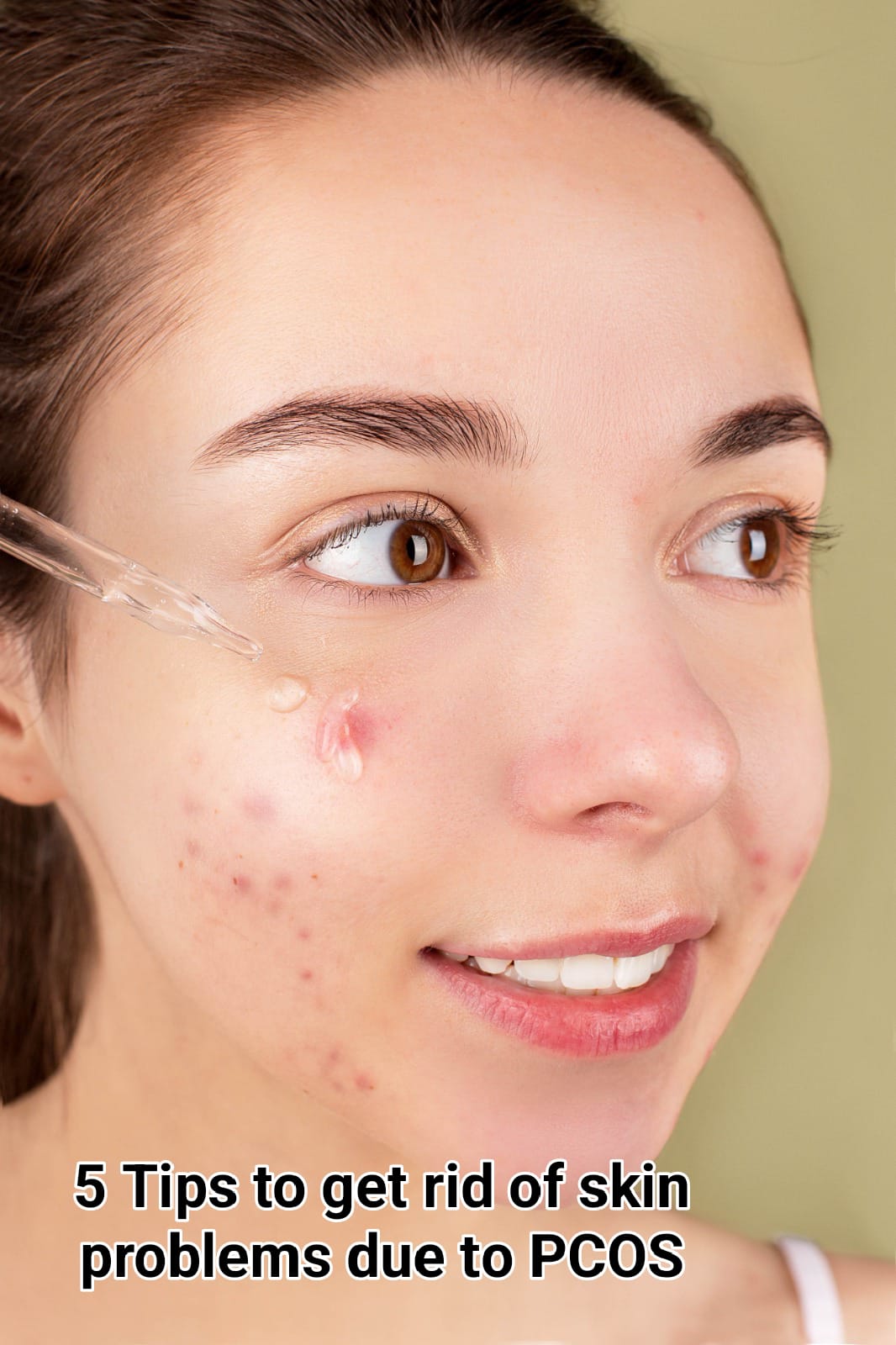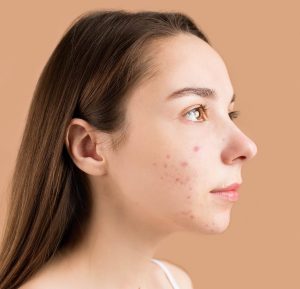Psoriasis is a chronic skin condition that causes cells to build up rapidly on the surface of the skin. This results in the formation of thick, silvery scales and itchy, dry, and red patches, often called plaques. These plaques can appear anywhere on the body, but they most commonly occur on the elbows, knees, scalp, and lower back.
It is an autoimmune disease, which means that it is caused by the immune system mistakenly attacking healthy skin cells. The exact cause of psoriasis is not fully understood, but it is believed to involve a combination of genetic and environmental factors.
There are several different types of psoriasis, including:
- Plaque Psoriasis: This is the most common form is characterized by raised, red patches covered with a silvery-white buildup of dead skin cells.
- Guttate Psoriasis: This type often starts in childhood or young adulthood and is characterized by small, red, dot-like lesions on the skin.
- Inverse Psoriasis: This form appears as smooth, red lesions in skin folds, such as the armpits, groin, and under the breasts.
- Pustular Psoriasis: This type is characterized by white pustules surrounded by red skin. It can be localized to certain areas of the body or cover the entire body.
- Erythrodermic Psoriasis: This is a rare but severe form that can cover the entire body with a red, peeling rash and can be life-threatening in some cases.
This is a chronic condition, and there is no cure for it, but there are various treatment options available to manage its symptoms. These treatments may include topical creams, light therapy, oral medications, and biologic drugs, which work to suppress the immune response that triggers psoriasis.
The choice of treatment depends on the type and severity of the condition, as well as individual factors and preferences. It can go through periods of remission and flare-ups, and management strategies aim to control symptoms and improve the quality of life for those affected by the condition.
What are Some Symptoms of Psoriasis?
Psoriasis can present with a variety of symptoms, and the specific symptoms can vary depending on the type of psoriasis and its severity. The most common symptoms of psoriasis include:
-
Red Patches of Skin: These are typically the hallmark of psoriasis. The patches may be small or large, and they are often red, raised, and covered with silvery-white scales.
-
Itching and Discomfort: Patches are frequently itchy and may become sore or painful. Scratching the affected areas can worsen the condition and lead to skin damage.
-
Dry Skin: The skin in and around psoriasis plaques is often dry and may crack or bleed.
-
Thickened or Pitted Nails: It can affect the fingernails and toenails, causing them to become thickened, pitted, discolored, or loosened.
-
Joint Pain: In some cases, this is associated with a form of arthritis known as psoriatic arthritis. Joint pain, stiffness, and swelling can be symptoms of this condition.
- Scaling and Cracking: The skin in psoriasis-affected areas can become scaly and may crack, leading to bleeding in severe cases.
- Redness and Inflammation: The affected skin is often red and may be inflamed.
- Pustules: Some types of psoriasis, such as pustular psoriasis, are characterized by the presence of white pustules surrounded by red skin.
- Inverse Psoriasis Symptoms: This appears in skin folds, may cause smooth, red lesions that can be particularly uncomfortable due to moisture and friction in these areas.
- Nail Changes: Can result in nail thickening, pitting (small dents or depressions), discoloration, and in some cases, separation of the nail from the nail bed.
It is important to note that psoriasis can vary greatly in its severity and presentation. Some individuals may only have a few small, isolated patches, while others may have extensive involvement of their skin. Additionally, this can go through periods of remission and flare-ups.

Why is Psoriasis Caused?
Psoriasis is considered an autoimmune disease, which means it occurs when the body’s immune system mistakenly attacks its own healthy tissues, in this case, the skin. While the exact cause of psoriasis is not fully understood, it is believed to result from a combination of genetic and environmental factors. Here are some key factors thought to contribute to the development of psoriasis:
-
Genetic Factors: There is a strong genetic component to psoriasis. If you have a family member with psoriasis, you may be at a higher risk of developing the condition. Specific genes have been identified as playing a role in the development of psoriasis.
-
Immune System Dysfunction: Psoriasis is primarily an immune-mediated disease. In a normal immune response, white blood cells called T cells help protect the body against infections. In people with psoriasis, these T cells are mistakenly activated and trigger an inflammatory response in the skin. This leads to the excessive growth of skin cells and the formation of psoriasis plaques.
-
Environmental Triggers: Certain environmental factors can trigger or exacerbate psoriasis in individuals who are genetically predisposed to the condition. Common triggers include infections (such as streptococcal infections), injuries to the skin (like cuts or burns), and stress.
-
Stress: High levels of stress can exacerbate symptoms or trigger flare-ups. Stress may affect the immune system, potentially leading to increased inflammation in the skin.
-
Medications: Some medications, particularly lithium, beta-blockers, and certain antimalarial drugs, have been associated with the onset or exacerbation in some individuals.
-
Hormonal Changes: Hormonal changes, such as those that occur during puberty or pregnancy, can impact the severity of psoriasis in some cases.
-
Alcohol and Smoking: Excessive alcohol consumption and smoking have been linked to an increased risk of developing psoriasis, and they can worsen the condition in those who already have it.
It is important to note that psoriasis is a complex condition with multiple potential triggers and contributing factors. Not everyone with a genetic predisposition will develop the condition, and not all cases are triggered by the same factors. While there is no cure, there are various treatment options available to manage its symptoms and provide relief to affected individuals.
What are Some Natural Treatment Methods for Psoriasis?
Natural treatment methods can help manage the condition’s symptoms and improve the overall quality of life for individuals. Here are some natural approaches that may help:
-
Diet and Nutrition:
- Anti-Inflammatory Diet: Consuming a diet rich in anti-inflammatory foods, such as fruits, vegetables, whole grains, and fatty fish (like salmon), may help reduce inflammation associated with psoriasis.
- Avoid Triggers: Identify and avoid specific dietary triggers that may exacerbate your psoriasis symptoms. Some people find that certain foods, like dairy, gluten, or nightshades (e.g., tomatoes, peppers, eggplants), can worsen their condition.
-
Moisturize: Keeping the skin well-hydrated can help alleviate dryness and itching. Use fragrance-free moisturizers regularly, especially after bathing.
-
Exposure to Sunlight: Limited exposure to natural sunlight can be beneficial for some individuals with psoriasis. UVB radiation from the sun can slow the growth of skin cells. However, it’s crucial to use sunscreen on unaffected skin to prevent sunburn.
-
Bathing Techniques:
- Epsom Salt Baths: Soaking in a warm bath with Epsom salt may help soothe the skin and reduce scaling.
- Oatmeal Baths: Colloidal oatmeal added to bathwater can provide relief from itching and inflammation.
-
Aloe Vera: Applying aloe vera gel or creams with aloe vera to plaques can help soothe the skin and reduce redness and itching.
-
Dead Sea Salts: Bathing in water containing Dead Sea salts may improve skin hydration and reduce inflammation for some individuals.
-
Turmeric: The active compound in turmeric, curcumin, has anti-inflammatory properties. Some people find relief by taking turmeric supplements or applying a paste made from turmeric and water to affected skin areas.
-
Fish Oil Supplements: Omega-3 fatty acids found in fish oil have anti-inflammatory properties and may help reduce inflammation in some individuals.
-
Stress Reduction: Stress can exacerbate symptoms. Engage in stress-reduction techniques such as meditation, yoga, deep breathing exercises, and relaxation exercises to manage stress.
-
Herbal Remedies: Some herbal remedies like Oregon grape, aloe vera, and tea tree oil may be used topically to soothe plaques.
Remember that what works for one person with psoriasis may not work for another, and individual responses to natural treatments can vary.
The ten modern lifestyle root causes for hormonal imbalance related to PCOS that may on some level lead to problems with Psoriasis are:
- Food Related Causes– Inflammation, toxicity, acidity, excess male hormones, insulin resistance.
- Exercise Related Causes: Sedentary lifestyle, lack of muscle strength, excess ovarian fat.
- Sleep Related Causes: Poor sleep quality (Lack of Deep Sleep).
- Stress Related Causes: Chronic Stress. Addressing these triggers through an integrated approach can naturally restore hormonal balance.

How can the Five Pillars Integrated Lifestyle Approach Help You to Have Hormonal Balance and Help With Taking Care of Psoriasis?
- Eat Right: Embrace living, water-rich, whole, plant-based foods that nurture our genetic potential. By opting for local and seasonal choices, we honor nature’s wisdom. Eliminating packaged and processed foods liberates us from epigenetic imprints, elevating our hormonal health.
- Move More: Embark on a journey of holistic lifestyle changes, where staying active transcends mere exercise. Embracing constant movement throughout the day optimizes epigenetic expression, igniting hormonal balance. Engage in pleasurable physical activities, dance, or even mindful walks to unlock the power of epigenetic triggers.
- Breathe Aware: As we deepen our understanding of Pranayama, the science of breath, we access a profound gateway to support gland function and harmonize hormones. Harnessing the breath’s epigenetic influence, we transcend the ordinary and elevate our hormonal well-being.
- Sleep Better: Unlock the secrets of deep sleep, a transformative practice for healing and regeneration. With the art of Yog Nidra to avoid being sleep deprived, we embrace epigenetic potential, unearthing hormonal harmony in the realm of dreams. Rejuvenate your entire being through this exquisite dance with the epigenetic clock to stop feeling sleep deprived.
- Mind Free: Journey into the realm of emotions, thoughts, and stress resilience, where journaling, gratitude, and emotional practices become our guiding compass. Embracing epigenetic intelligence, we shift our narrative from stress to serenity, empowering our hormonal landscape.








